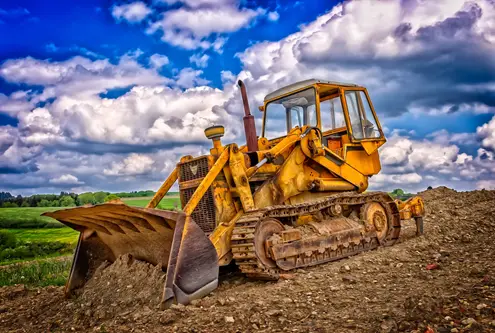When you’re working on a job, chances are you’re going to be required to take ownership of potential hazardous spills or contaminations from any harmful materials. Is that something you’re prepared for? Containment liners (AKA environmental liners) can be tricky to install and you need to make sure you’re up to the standards of the state you’re working in. We want to help you better understand what is required at a site when it comes to containment.
What are environmental liners?
These are also known as containment liners which, as the name suggests, have the specific job of containing something during a construction job, usually something liquid. Common applications of such containment liners are for oil and gas as well as chemicals, toxins, or any kind of hazardous material on a job. The key is to keep anything liquid from coming into contact with the ground and seeping down into the soil where it could harm the local environment or contaminate the water supply.
What kind of materials are containment liners used for?
Common uses for containment liners are for the containment of oil or some form of liquid natural gas. But other materials such as an hazardous or toxic materials (materials containing lead, any toxic paint materials, etc.) should also be captured and contained with liners. Anything that is highly corrosive likely cannot be contained with typical liners
Primary vs secondary containment installation
Containment liners are usually broken down into two parts: primary and secondary contaminants. Primary containment is the first line of defense and, as the name suggests, the first liner. The secondary containment is also installed but ideally only put to use for if the first containment fails. Most jobs require both to ensure clean and extensive containment of any hazardous or unwanted materials.
Do I need containment liners?
The short answer is yes, you do. Different states have their own laws about environmental liners, the specifications to which they’re used, and the exact needs for primary and secondary containment liners. But, across the board you’re going to be required to keep the local ecosystem safe from any harm that could come to it from your construction job. Failing to use a containment system could result in costly remediation efforts and fines as well as lasting damage to the environment.
What we can do
Diamond T Services offers full containment options for your job. We recognize that each project is unique and each area where projects happen come with their own sets of challenges. We’re more than up to the task of helping you with all your containment liner needs for your next job. We offer a variety of materials and combinations and pride ourselves on our unparalleled ability to craft unique solutions for any custom job out there.
Get in contact with us today to find out how we can become your solution for containment liner needs!



